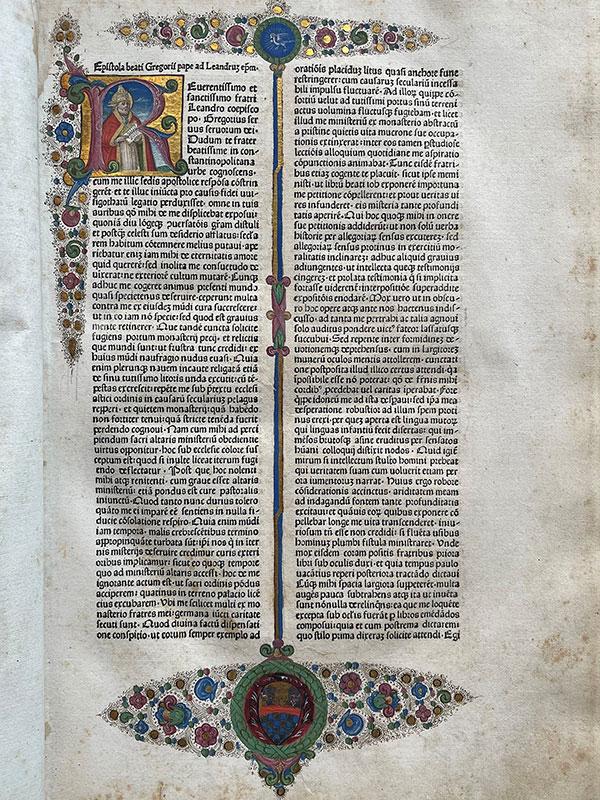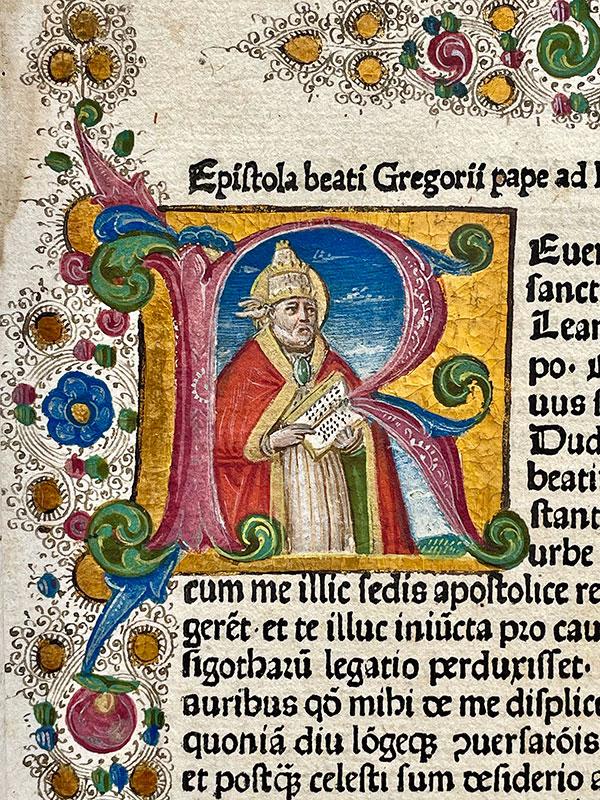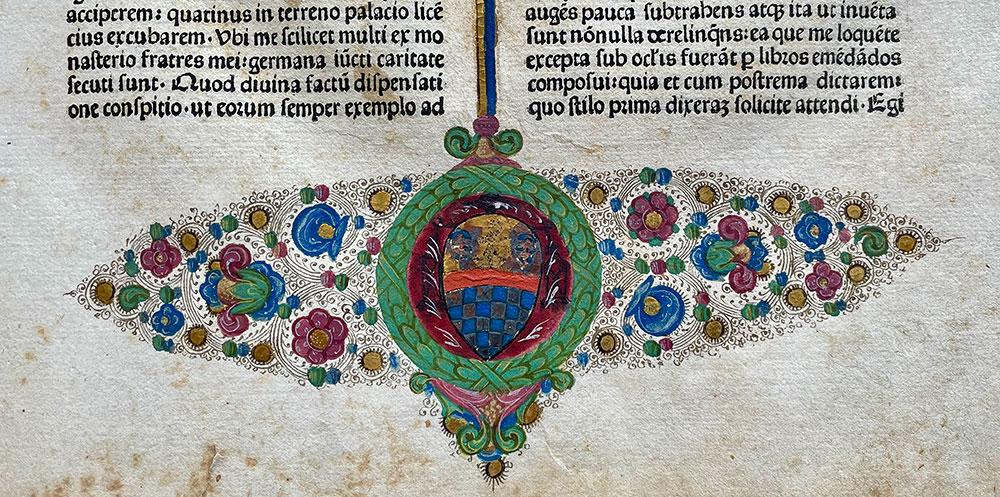The 15th-century Venetian artist known as the Master of the Pico Pliny enjoyed a career spanning 1460 to 1505, in which they produced hand-painted decoration in both manuscripts and incunabula and designed woodcuts for printed books. In spite of this prolific career, they remain anonymous and are identified based upon the stylistic illumination in a manuscript of Pliny’s Historia naturalis produced for the philosopher and founder of Christian Kabbalah Giovanni Pico della Mirandola (1463–94) in 1481 (now Venice, Biblioteca Nazionale Marciana, MS. Lat. VI, 245 (2976)).
Unrecognized until now, another incunable illuminated by the Pico Master for Giovanni Pico della Mirandola himself has just come to light at the Morgan. This is a copy of Pope Gregory I, Moralia in Job, printed in Rome (apud Sanctum Marcum) in 1475 (PML 16365).
The Pico Master’s artistic style is identifiable in the historiated initial of Pope Gregory through the downturned mouth and long, wispy clouds in gradated sky, as well as the vibrant foliate initial and border decoration with swirling filigree (a decorative trait more common in Ferrara, where the Pico Master first trained as an artist). The Pico della Mirandola coat-of-arms is painted in the bottom margin, and the posthumous inventories of Pico’s library contain two copies of Gregory’s Moralia.
The short-lived anonymous press at the palace of St. Mark in Rome has been attributed to Vitus Puecher, a German printer who was only active in Rome about 1475–78. This was the third edition of Gregory’s moralistic commentary on Job, but the first printed in Italy. Giovanni Pico della Mirandola worked on a translation and reinterpretation of the Book of Job, the manuscript of which is now in the Vatican Library (Cod. Ottob. Lat. 607), and his most influential work, Oration on the Dignity of Man, written in 1486, makes oblique references to Gregory’s Moralia, perhaps gleaned from this very copy.
The Master of the Pico Pliny was a favored topic of the late Renaissance art historian Lilian Armstrong (1936–2021). Armstrong was a professor of art history at Wellesley College and the first holder of the college’s prestigious Mildred Lane Kemper Chair in the Humanities. She was an internationally-renowned scholar who specialized on the artist Marco Zoppo and Italian Renaissance book illumination and illustration. For more than 50 years, Armstrong was a visitor to the Morgan’s Reading Room, examining Italian manuscripts and incunabula, and yet, she appears not to have known of the Gregory volume as it is not recorded in her list of books illuminated by the Pico Master (first compiled in 1988, updated in 2003, then listing 117 books).
I first encountered Armstrong’s work when I was pursuing my MA degree in Dallas and working part-time in a rare book library. Her writing was approachable and clearly outlined the complex web of relationships that existed between manuscript makers, book printers, the artists who decorated both types of the books, and the readers who had both types of the books on their shelves. The historical context for books in fifteenth-century Europe is so much more than just the simplistic dichotomy of manuscript book vs. printed book, and this was particularly relevant in Armstrong’s work.
One of Armstrong’s final contributions to the field, and a fantastic overview drawn upon her expertise and years of experience, is “The Decoration and Illustration of Venetian Incunabula. From Hand Illumination to the Design of Woodcuts,” was included in the catalogue for the 2018 exhibition at the Museo Correr in Venice, Printing R-Evolution and Society 1450-1500: Fifty Years that Changed Europe, edited by Cristina Dondi (complete catalogue available online). This essay is a wonderful showcase of Lilian Armstrong’s mastery of the material at this watershed moment in European book history and the contributions she made to the field that will inspire future generations of researchers.
John T. McQuillen
Associate Curator of Printed Books & Bindings
The Morgan Library & Museum



